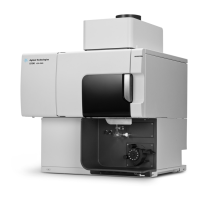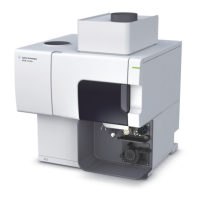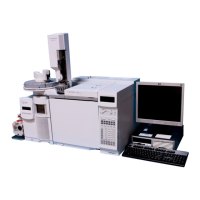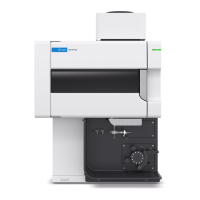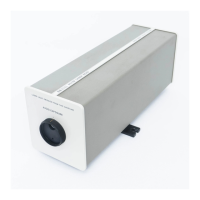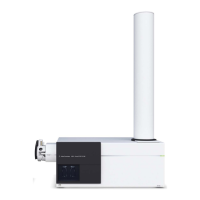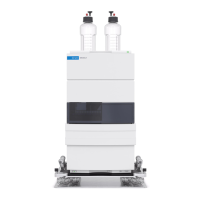46 Agilent Restricted Agilent 5110/5100 ICP-OES Service Manual
3 General Information
Nebulizers
• Pneumatic (standard)
• Ultrasonic (optional)
Glass Concentric Nebulizer
Sample solution is drawn through a central capillary that is surrounded by an outer channel
through which a carrier gas is fed. The carrier gas is forced through the outer channel, passes by
the end of the sample capillary and lowers the pressure surrounding the tip of the capillary,
extracting the sample.
The glass concentric nebulizers that can be used with the Agilent instruments are;
• Conical ‘K’ type, nebulizer
• Seaspray - high dissolved solids nebulizer
The Conical ‘K’ type nebulizer is used for high precision, routine aqueous and organic
applications.
• Material: Borosilicate glass
• High physical reproducibility ~ 1% TDS tolerance, typically up to 10%
• High tolerance to particulates, typically up to 75um Low RSD’s due to highly accurate
construction Free uptake: 3mL/min
• Gas flow: 0.7L/min at 30psi
Seaspray Nebulizer
The SeaSpray nebulizer is used for trace level analyses. It has better nebulization efficiency and
resists clogging with most mineral salts.
• Material: Borosilicate glass
• High physical reproducibility ~ 1% TDS tolerance, typically up to 20%
• High tolerance to particulates, typically up to 75um Low RSD's due to highly accurate
construction
• Free uptake: 2mL/min
• Gas flow: 0.7L/min at 30psi
Ultrasonic
An ultrasonic nebulizer is offered with the Agilent 5110 ICP-OES instruments as an accessory. A
typical ultrasonic nebulizer uses the vibration of a piezo-electric transducer to form an aerosol.

